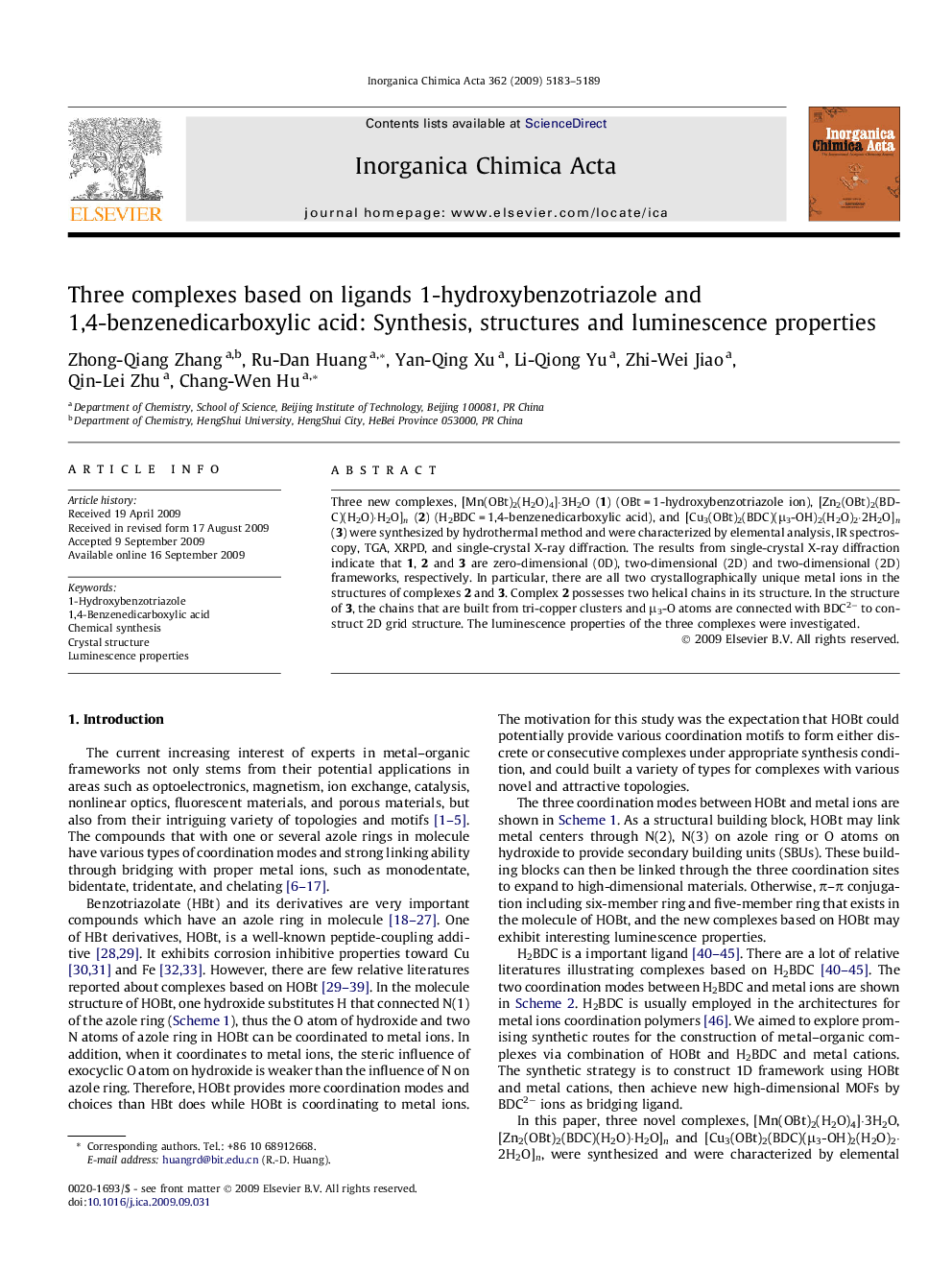| Article ID | Journal | Published Year | Pages | File Type |
|---|---|---|---|---|
| 1311343 | Inorganica Chimica Acta | 2009 | 7 Pages |
Three new complexes, [Mn(OBt)2(H2O)4]·3H2O (1) (OBt = 1-hydroxybenzotriazole ion), [Zn2(OBt)2(BDC)(H2O)·H2O]n (2) (H2BDC = 1,4-benzenedicarboxylic acid), and [Cu3(OBt)2(BDC)(μ3-OH)2(H2O)2·2H2O]n (3) were synthesized by hydrothermal method and were characterized by elemental analysis, IR spectroscopy, TGA, XRPD, and single-crystal X-ray diffraction. The results from single-crystal X-ray diffraction indicate that 1, 2 and 3 are zero-dimensional (0D), two-dimensional (2D) and two-dimensional (2D) frameworks, respectively. In particular, there are all two crystallographically unique metal ions in the structures of complexes 2 and 3. Complex 2 possesses two helical chains in its structure. In the structure of 3, the chains that are built from tri-copper clusters and μ3-O atoms are connected with BDC2− to construct 2D grid structure. The luminescence properties of the three complexes were investigated.
Graphical abstractThree new complexes, [Mn(OBt)2(H2O)4]·3H2O (1) (OBt = 1-hydroxybenzotriazole ion), [Zn2(OBt)2(BDC)(H2O)·H2O]n (2) (H2BDC = 1,4-benzenedicarboxylic acid), and [Cu3(OBt)2(BDC)(μ3-OH)2(H2O)2·2H2O]n (3) were synthesized by hydrothermal method and were characterized by elemental analysis, IR spectroscopy, TGA, XRPD, and single-crystal X-ray diffraction. The results from single-crystal X-ray diffraction indicate that 1, 2 and 3 are zero-dimensional (0D), two-dimensional (2D) and two-dimensional (2D) frameworks, respectively. The luminescence properties of the three complexes were investigated.Figure optionsDownload full-size imageDownload as PowerPoint slide
